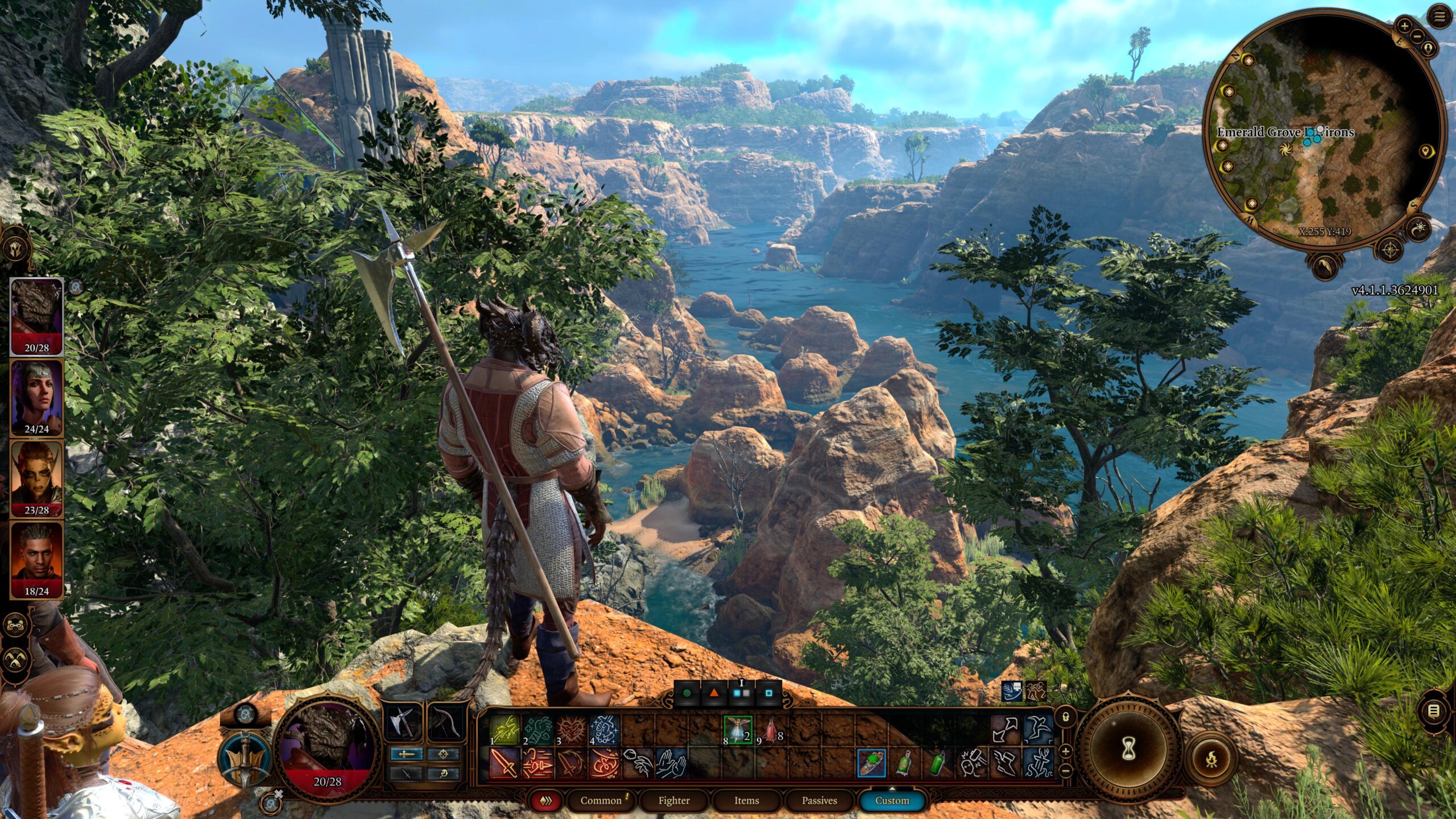Introduction to Baldur’s Gate 3
Baldur’s Gate 3, developed by Larian Studios, marks a significant return to the beloved RPG franchise that began with the original Baldur’s Gate released in 1998. The game stands as a testament to the enduring legacy of its predecessors, which helped set the standard for the role-playing game genre. Its rich narrative, complex characters, and intricate gameplay mechanics have influenced countless titles over the years. As players stepped into the realms of sword and sorcery, they found themselves immersed in a world where choices mattered, much like in Baldur’s Gate 3.
The development of Baldur’s Gate 3 began in earnest in 2017, when Larian Studios confirmed their effort to revive this iconic series. Following the success of Divinity: Original Sin II, expectations within the gaming community were substantially high. In 2020, the game entered early access, granting players an opportunity to participate in the development process. Feedback from the community during this phase fueled enhancements and expansion of the game, showcasing Larian’s commitment to delivering a polished final product.
The anticipation surrounding Baldur’s Gate 3 has been palpable, particularly as it transitioned from early access to full release in August 2023. With over 1 million players engaging during the early access period, it became clear that the franchise still holds a deep affection among fans. Upon its full release, the game offers an expansive narrative experience, character customization options, and a tactical combat system that resonates with both new players and longtime enthusiasts. As we delve deeper into the gameplay mechanics and story elements in this review, the journey of Baldur’s Gate 3 serves as a compelling reminder of the franchise’s historical significance and its impact on the RPG landscape.
Gameplay Mechanics and Innovations
Baldur’s Gate 3 introduces a robust system of gameplay mechanics that distinguishes it from many traditional role-playing games (RPGs). At the heart of the game lies a turn-based combat system that adopts the tactical nature of the Dungeons & Dragons 5th Edition ruleset. This system allows players to think strategically about their moves, positioning, and the abilities they choose to utilize on each turn. Each character’s action economy, comprising movement and action points, necessitates careful planning, making combat encounters feel dynamic and engaging.
Character customization in Baldur’s Gate 3 plays a significant role in enhancing the gameplay experience. Players can create unique characters by choosing from a variety of races, classes, and backgrounds, each offering distinct abilities and traits. This level of customization allows players to tailor their gameplay style, whether they wish to focus on melee combat, spellcasting, or stealth. Additionally, the game provides opportunities for character development through skill checks and dialogues, reflecting the choices made throughout the narrative.
Decision-making elements are another hallmark of Baldur’s Gate 3, embedded into its core mechanics. Players are faced with moral quandaries and choices that have tangible consequences on the storyline, the world, and the characters around them. The implications of these decisions can lead to multiple endings, character fates, and shifting alliances, making every playthrough unique. This intertwining of narrative and mechanics not only strengthens immersion but also creates a sense of agency, as players see the direct impact of their choices on the unfolding story.
In summary, the blend of turn-based combat, character customization, and meaningful decision-making cements Baldur’s Gate 3’s status as a standout RPG. By adhering to the Dungeons & Dragons 5th Edition framework while innovating in gameplay design, the game offers both newcomers and veterans of the genre a rich, rewarding experience that enhances player engagement.
Storytelling and Character Development
Baldur’s Gate 3 masterfully intertwines storytelling and character development, establishing an engaging narrative that captivates players throughout their journey. The game leverages advanced storytelling techniques, employing layered character arcs that allow for deeper emotional resonance. Each character, from the protagonist to the supporting cast, exhibits distinct personalities and backgrounds, making them memorable and relatable. Players observe this depth through extensive dialogue options, revealing motivations and personal histories that unfold as the game progresses.
A significant aspect of Baldur’s Gate 3’s narrative is the emphasis on player agency. The game’s design encourages exploration of player choices, with decisions having profound effects on character relationships and the overarching story. This branching narrative structure empowers players to shape the course of the tale, which heightens the investment in both the plot and characters. As players navigate moral complexities, they witness how individual actions can yield varying consequences, fostering a sense of responsibility toward the in-game world.
The realm of Baldur’s Gate, steeped in rich lore, enhances the storytelling experience by creating a vibrant world that invites exploration and discovery. Dynamic environments, diverse cultures, and intricate histories populate the setting, allowing players to immerse themselves fully in the narrative. The writing in Baldur’s Gate 3 not only builds an engaging storyline but also enriches gameplay through intelligent world-building. This attention to detail ensures that players feel a genuine connection to the characters and their struggles, further enhancing the emotional stakes within the unfolding plot.
As players delve into the gripping tale, themes of friendship, redemption, and the eternal struggle between good and evil resonate profoundly. Baldur’s Gate 3 successfully navigates these complex narratives while allowing for a rich tapestry of character development, ensuring that each player’s experience is uniquely their own. Overall, the game excels in intertwining storytelling mechanics with character evolution, establishing a memorable gaming experience that resonates long after the screen fades to black.
Final Thoughts and Conclusion
Baldur’s Gate 3 emerges as a significant milestone in the role-playing game (RPG) genre, successfully weaving together an intricate narrative and deep gameplay mechanics that resonate with both seasoned fans and newcomers alike. One of the game’s primary strengths lies in its emphasis on player choice, allowing for diverse character development and multiple approaches to questing. The fidelity to the Dungeons & Dragons 5th Edition rules adds a layer of depth that will appeal to tabletop enthusiasts, providing an immersive experience that feels both familiar and innovative.
Critics have lauded the game for its stunning visuals, rich storytelling, and thoroughly engaging combat systems. Each character, whether a companion or an adversary, is crafted with remarkable depth, enhancing the overall narrative impact. Players have noted how their decisions bear weight not only on the immediate outcomes but also ripple through the overarching storyline, leading to memorable experiences. Nevertheless, the game is not without its weaknesses. Some users have reported occasional bugs and performance issues, particularly in the expansive and detail-rich environments. Such technical challenges can momentarily detract from the experience, although many players find that the game’s merits far outweigh these drawbacks.
In its current iteration, Baldur’s Gate 3 honors the legacy of its predecessors while carving out a distinctive identity. The reception from both critics and the gaming community reflects a strong endorsement, suggesting that it has not only met the high expectations set by earlier titles but also broadened the horizons of the RPG genre. As we look to the future, there is considerable anticipation surrounding potential expansions or sequels. The current landscape leaves room for further exploration of the game’s universe, building on its strong foundation with new narratives and mechanics. The journey of Baldur’s Gate is far from over, and its impact on the gaming world will be felt for years to come.


Leave a Reply